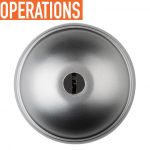Over the past several years, fleet managers have come under increasing pressure to cut costs and save money. While there are a number of tools available to fleets to control costs, these solutions are often used in a way that don’t maximize cost savings.
And even if fleets want to streamline processes and integrate the data provided by these tools, there are numerous and inefficient steps required to gain true operational visibility and efficiencies.
Taking a fresh approach is particularly beneficial for related fleet functions such as fuel and maintenance expenditures and even more compelling when integrating the data on a single platform. Doing so provides additional visibility, insights, and the ability to correlate the data into potential efficiencies and cost savings.
While stabilization has helped make maintenance costs more predictable, it is also creating a perception that these stable costs can’t be reduced—they are what they are. A well-run program, which emphasizes visibility and control, can achieve cost savings year over year. Maintenance doesn’t exist in a vacuum and neither does fuel use—they have a relationship. Having a single view helps organizations to proactively manage these expenses more efficiently.
DATA INTEGRATION
With the rise of integration, the days of separate data streams should be over. Today, single data platforms are growing in popularity for a number of reasons, including visibility into multiple streams of data at once. For truly integrated fuel and maintenance programs, the data must be tied to individual vehicles so fleet managers can identify issues at a granular level and act.
Perhaps a more important benefit of integrated fuel and maintenance data is that it allows users to see relationships. Fuel data can point fleet managers to a potential maintenance issue. For example, frequent fill ups unrelated to long-distance travel can point to maintenance issues that should be addressed.

SINGLE PLATFORM
Integrating fuel card and maintenance functions onto a single platform, like the Voyager Maintenance Solution, has immediate benefits. It will likely translate into immediate cost savings because it allows centralized billing, payment, data, and reporting, streamlining business processes.
More broadly, the single fuel-maintenance platform allows fleet managers to react more quickly to emerging maintenance issues in individual vehicles. After realizing the immediate savings from automated workflow and approvals, the long-term benefits of fuel and maintenance data integration takes effect. Maintenance data and fuel use data alone cannot provide the full picture. Having a single view helps organizations proactively manage these expenses more efficiently. But this is just the start.
PREVENTION FIRST
A preventive approach due to data insights is more predictive, proactive, and less expensive than pushing vehicles and handling the issue when it becomes an expensive, catastrophic failure. Preventive maintenance also “…impacts a slew of cost categories in a typical fleet vehicle. Resale value, fuel efficiency, wear and tear—all of these send dollars down the drain, dollars that are easy to capture with some effort and timely data,” says Bob Cavalli in Fleet Financials. Over time, a strong, data-driven preventive maintenance program will open opportunities to slash maintenance costs through:
- Aligning maintenance schedules to manufacturer specifications—this not only ensures that the vehicle is serviced properly, but the warranty is protected.
- Scheduling minor repairs—this makes maintenance predictable both in terms of downtime and for budgeting. Minor repairs can be handled quickly and result in less unproductive downtime.
By following these two steps, fleets can avoid the five most common roadside incidents: jump starts, flat tires, winch outs, lockouts, and fuel outs. These five roadside incidents account for 94 percent of all calls for towing. A major benefit of having a strong, integrated preventive maintenance program is that it will also help fleets stay up and running and avoiding big-ticket repairs and lost driver productivity.
AUTOMATED PROGRAMS
Automation plays a significant role in leveraging integrated fuel and maintenance data. An automated maintenance program, such as the Voyager Maintenance Solution, typically allows for the ability to pre-approve services and parts purchases based on fleet-selected parameters. This simplifies the process of handling preventive and unscheduled maintenance since the driver can simply go to a pre-approved repair shop and have the services done and charged to the company.
A Voyager Maintenance Solution fleet customer recently experienced the benefits of pre-approvals firsthand when one of its drivers took his vehicle in for an oil change. Because the work fit the pre-approved maintenance parameters set by the fleet, the maintenance provider received automatic permission to proceed, expediting the oil change and minimizing vehicle and driver downtime. When the work was finished, it was billed automatically, simplifying payment for the driver, the fleet manager, and the third-party maintenance provider. On the flip side, unnecessary or overpriced repairs can be stopped in their tracks based on vehicle data and parts pre-approvals. Fleet management personnel are alerted if an unnecessary or overpriced repair is attempted.
In an era when fleet managers are asked to do more with less, implementing an integrated fuel-maintenance solution is both cost effective and easy to execute. Fleets that take the step to integrate fuel management and their maintenance programs will likely not only see the immediate benefits of single-platform data integration, they may find the added advantage of focusing on other valuable activities and initiatives that help keep their organizations moving forward.
ABOUT THE AUTHOR
Travis Lachinski is the vice president of fleet and aviation product management at U.S. Bank. The information in this article was adapted from the U.S. Bank Voyager white paper, “Bucking the trend: why fuel and maintenance programs should go hand-in-hand.” Find out more about the U.S. Bank Voyager Fleet Program and read the complete white paper at www.voyager.usbank.com.
MODERN WORKTRUCK SOLUTIONS: MARCH 2019 ISSUE
Did you enjoy this article?
Subscribe to the FREE Digital Edition of Modern WorkTruck Solutions magazine.





